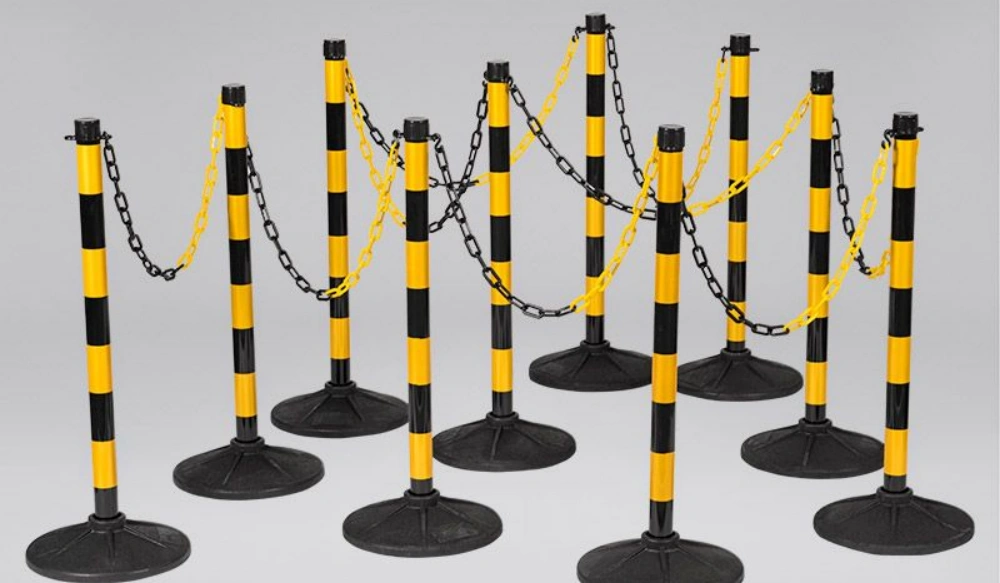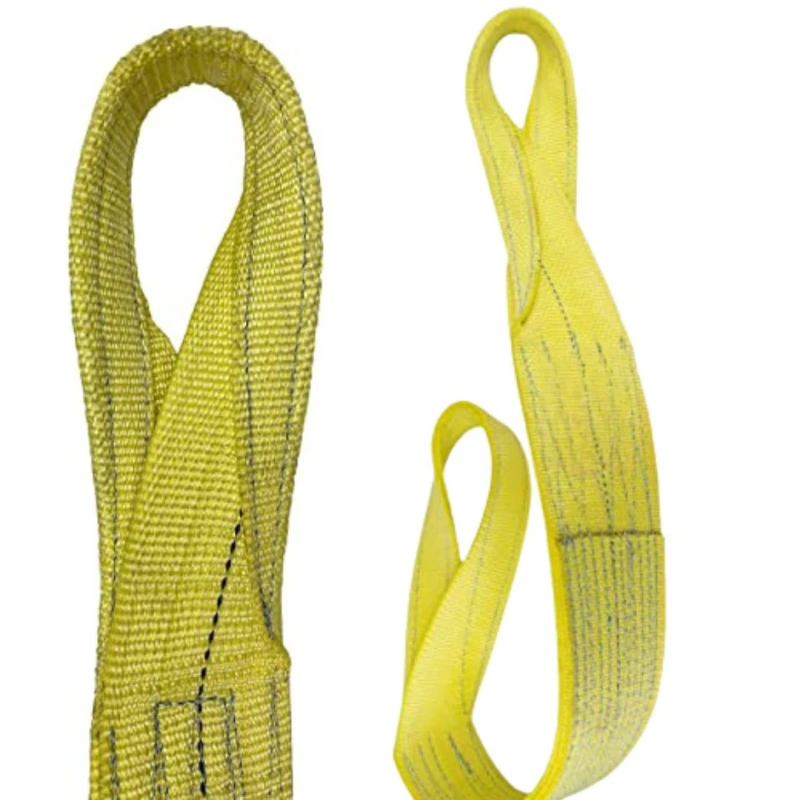When you ask how strong plastic chain is, you find that strength varies by size and material. For example, a 1.5-inch chain can handle up to 125 lbs, while a 4-inch chain can handle up to 700 lbs. Powerful Machinery designs plastic chains with durable HDPE and PVC, making them reliable for many uses.
The strength depends on factors like fiber diameter, chemical composition, and how the chain is made. You should always match the chain to your specific needs and think about safety in every application.
Key Takeaways
- Plastic chain strength varies by size and material. A 1.5-inch chain supports up to 125 lbs, while a 4-inch chain can handle 700 lbs.
- Choose the right plastic chain for your needs. Consider factors like tensile strength, material composition, and intended use to ensure safety.
- Plastic chain is ideal for marking hazardous zones and crowd control. It is lightweight, rustproof, and non-conductive, making it safe for various environments.
- Always inspect plastic chains for wear and ensure they meet safety standards. Use bright colors for visibility and secure installation to enhance safety.
How Strong is Plastic Chain?
Strength Metrics
When you want to know how strong a plastic chain is ,you need to look at its tensile strength. Manufacturers measure tensile strength using universal testers. They place specimens in the grips, set the separation, and pull the chain until it breaks.
The most common standards for testing include ASTM D638 and ISO 527-1:2012. These standards help you understand the tensile strength at break for different types of plastic chains.
| Test Method | Description | Test Speed (mm/min) |
|---|---|---|
| ASTM D638 | Standard Test Method for Tensile Properties of Plastics | Specified by material |
| ISO 527-1:2012 | Determination of tensile properties. General principles | 5 or 50 (strength), 1 (modulus) |
You will find that plastic chain comes in many sizes and strengths. For example, a 1.5-inch chain can support up to 125 lbs. A 4-inch chain can reach 700 lbs.
Powerful Machinery offers plastic chain with tensile strength ranging from moderate to high, depending on the size and material. You should always check the specifications before choosing a chain for your project.
Industry standards also test flexural, compression, impact, and tearing properties. These tests ensure that plastic chain meets safety and durability requirements. You can trust certified products from Powerful Machinery for reliable performance.
Factors Affecting Strength

You need to consider several factors when asking how strong a plastic chain. is The size of the chain links plays a big role. Larger links usually have higher tensile strength. Material composition matters as well.
Chains made from High-Density Polyethylene (HDPE) show greater resistance and strength than those made from other plastics. HDPE has a density between 0.933 and 1.27 g/cm³. It features high crystallinity and low side branching, which makes the chain thicker and stronger.
| Property | HDPE Characteristics |
|---|---|
| Density | 0.933 to 1.27 g/cm³ |
| Strength | Stronger and more resistant to load distortion than LDPE |
| Crystallinity | High density and orderly arrangements of polymer chains |
| Side Branching | Low levels of side-branching groups |
PVC is another common material. It offers good weather resistance and moderate tensile strength. The design of the chain also affects strength. Round links distribute force evenly, while flat links may provide more surface area for certain uses.
You should use plastic chain for marking hazardous zones, crowd control, and decorative purposes. It works well in food and packaging industries, hygiene-critical environments, and material handling. You can rely on a plastic chain for gentle product handling and corrosion resistance.
However, you should not use plastic chain for heavy lifting or load-bearing tasks. The optimal strength of the plastic chain makes it perfect for non-load-bearing applications.
When plastic chain fails under stress, you may see brittle fractures, slow crack growth, or multiple cracks along the links. Surface and internal cracks can develop if you exceed the tensile strength. Always match the chain to your specific needs and check for certifications.
Tip: Choose the right plastic chain size and material for your application. Always review the tensile strength and intended use before installation.
Plastic Chain Types & Applications

Materials & Design
You will find that plastic chain comes in many forms, each designed for specific needs. Manufacturers use materials like High-Density Polyethylene (HDPE), Polyethylene Terephthalate (PET), and PVC. HDPE gives plastic chains higher strength, rigidity, and toughness. PET adds versatility and durability.
PVC offers weather resistance, making plastic chain suitable for outdoor use. Plasticizers make the chain flexible, while fillers such as silica and carbon black boost strength and durability.
Plastic chain from Powerful Machinery features rustproof and non-conductive properties. You can use it near electrical equipment without worry. The chain resists chemicals and UV rays, so it lasts longer in harsh environments. Its lightweight design allows you to handle and install it easily.
You can choose from round, oval, or geometric shapes. Each shape serves a different purpose, whether you need visual appeal or extra surface area for barriers.
Environmental factors like UV exposure and temperature changes can affect the longevity of plastic chain. Powerful Machinery uses commercial-grade HDPE and PVC to ensure the chain stands up to sunlight and temperature swings. You get a product that maintains its strength and flexibility over time.
Tip: Select UV-resistant plastic chain if you plan to use it outdoors. This choice helps you avoid premature wear and keeps your barriers strong.
Common Uses

Plastic chain works well in many settings. You see it in crowd control at airports and malls, where it guides foot traffic and creates barriers. In industrial environments, you use plastic chain to mark hazardous zones and designate restricted areas.
Construction sites rely on plastic chain for temporary barriers, helping maintain order and safety during heavy-duty construction projects.
| Application Area | Description |
|---|---|
| Crowd Control | Used in public spaces like airports and malls to create barriers and guide foot traffic. |
| Industrial Settings | Designates restricted areas and marks hazardous zones in warehouses and facilities. |
| Construction | Helps in creating temporary barriers to restrict access and maintain order at construction sites. |
You can also use plastic chain for decorative purposes in gardens, events, or retail displays. The chain’s customizable options let you pick the right size, shape, and color.
Powerful Machinery offers plastic chains in sizes from small to large, with finishes ranging from standard colors to glow-in-the-dark and metallic. You get flexibility for any project, whether you need high visibility or a specific aesthetic.
Plastic chain provides reliable barriers without the risk of rust or electrical conductivity. You benefit from easy installation and low maintenance. Powerful Machinery’s plastic chain stands out for its customization and consistent reliability, making it a smart choice for many industries.
Plastic Chain vs Metal Chain
Strength Comparison
You often need to decide between a plastic chain and a metal chain for your project. The main difference comes down to strength. Metal chains can handle tensile loads that exceed 10,000 pounds. High-quality plastic chains, such as those from Powerful Machinery, reach a maximum load capacity of around 1,500 pounds.
This gap in strength means you should choose metal chain for heavy-duty tasks like lifting or securing large objects. Plastic chain works best for marking boundaries, crowd control, or decorative uses where extreme strength is not required.
- Metal chains offer superior strength for load-bearing applications.
- Plastic chains provide enough strength for non-load-bearing tasks.
- You should always match the chain type to your safety needs.
Plastic chain is much lighter than metal chain. You can carry, install, and adjust the plastic chain with ease. This lightweight feature helps when you need to move barriers often or work overhead. You save time and effort during setup and maintenance.
- The plastic chain is easy to transport and install.
- Metal chain requires more effort due to their weight.
Durability & Safety
You want your chain to last and keep people safe. Plastic chain stands out for its non-conductive and rustproof qualities. You can use it near electrical equipment without risk. It resists corrosion, so it stays reliable in wet or humid conditions. A metal chain may rust unless you choose stainless steel or treated options.
| Advantage | Plastic Chain | Metal Chain |
|---|---|---|
| Non-conductivity | Yes | No |
| Rust resistance | Yes | No |
| Weight | Lightweight | Heavier |
| Corrosion resistance | Yes | No |
Plastic chain is weather-resistant and does not rust, making it ideal for outdoor use. You may notice that metal chain develops surface rust after exposure to rain, while plastic chain remains unchanged.
However, a plastic chain can show brittleness or cracks under mechanical tension or extreme cold. Metal chain maintains its strength better under stress.
- Plastic chain is safe for electrical environments.
- Plastic chain resists rust and corrosion.
- Metal chain offers greater strength and durability under heavy stress.
You can extend the life of the plastic chain by cleaning it regularly, applying UV protectant sprays, and storing it away from direct sunlight. These practices help you maintain strength and reliability for outdoor projects.
Plastic chain is also a more economical choice for large-scale projects. You spend less on purchases and maintenance, and you avoid rust-related repairs. This cost-effectiveness adds value, especially when you need reliable barriers without heavy loads.
Tip: Use plastic chain for safety, visibility, and easy handling. Choose metal chain when you need maximum strength and durability.
Safety & Best Practices
Safe Use Tips
You play a key role in maintaining safety when you use plastic chain for safety barriers. Always select chains with bright colors to improve visibility and help people recognize safety zones. You should check that the chain is UV-resistant and durable, especially if you plan to use it outdoors.
Powerful Machinery’s plastic chain works well in construction sites, event venues, and industrial settings. You can rely on these chains to establish effective safety barriers and support industrial safety.
- Choose chains with high visibility for enhancing safety.
- Inspect chains regularly for cracks or wear.
- Use plastic chain only for marking or crowd control, not for heavy lifting.
- Confirm that the chain meets safety standards and certifications.
You should install plastic chain securely to prevent accidental removal or tripping hazards. Make sure the chain is taut and anchored at both ends. You can use plastic chain to guide foot traffic, mark hazardous areas, or create safety zones in busy environments.
Tip: Always use plastic chain in accordance with manufacturer guidelines to maximize safety and reliability.
Limitations
Plastic chain offers many advantages for safety barriers, but you must understand its limitations. You should never use plastic chain for load-bearing tasks or lifting heavy objects. The chain is designed for marking, crowd control, and industrial safety applications.
You need to match the chain size and material to your specific needs. Powerful Machinery provides chains in various sizes, so you can select the right link length for strength, visibility, and durability.
| Limitation | Recommendation |
|---|---|
| Not for heavy lifting | Use for marking and crowd control |
| Limited tensile strength | Select an appropriate size and material |
| Weather exposure | Choose UV-resistant options |
When you choose a plastic chain, consider the environment and application. Opt for brighter colors for safety applications. Review certifications to ensure the chain meets industrial safety standards. Powerful Machinery’s products carry international certifications, giving you confidence in their reliability.
Note: Always match the chain type to your safety requirements and consult experts if you have questions about industrial safety.
Conclusion
You have learned that plastic chain strength depends on size, material, and design. Powerful Machinery offers certified chains that meet safety standards for many uses. You should always match the chain type and strength to your needs:
- Larger links work best for industrial and heavy-duty tasks.
- Smaller chains fit decorative or event projects.
- Different types ensure safety and performance.
You can contact Powerful Machinery for expert advice and reliable products that suit your application.
FAQ
How do you choose the right size plastic chain?
You should match the chain size to your application. For crowd control, use thicker links for visibility. For decorative uses, select smaller links. Always check the weight rating and environment before making your choice.
Can you use plastic chain outdoors?
Yes, you can use plastic chain outdoors. Powerful Machinery’s plastic chains resist UV rays, moisture, and temperature changes. You get reliable performance in gardens, construction sites, and public spaces.
Is plastic chain safe near electrical equipment?
Absolutely! Plastic chain is non-conductive. You can safely use it around electrical panels, machinery, or wiring. This feature helps prevent electrical hazards in industrial and commercial settings.
How do you cut plastic chain?
You can cut plastic chain with heavy-duty scissors or bolt cutters. Measure the length you need, then cut between the links. Always wear gloves for safety.
What certifications do Powerful Machinery’s plastic chains have?
| Certification | Description |
|---|---|
| ISO9001 | Quality management system |
| TUV Rheinland | Safety and reliability |
| ASTM | Material standards |
Note: These certifications ensure you get a safe and reliable product.


